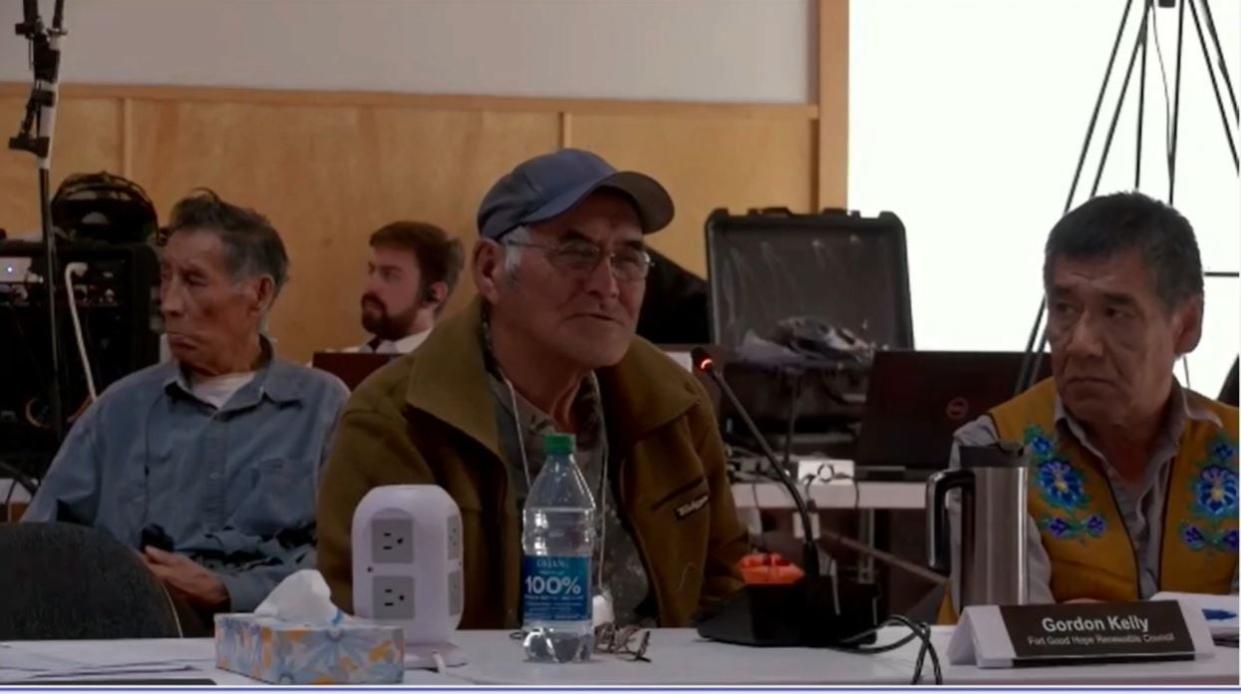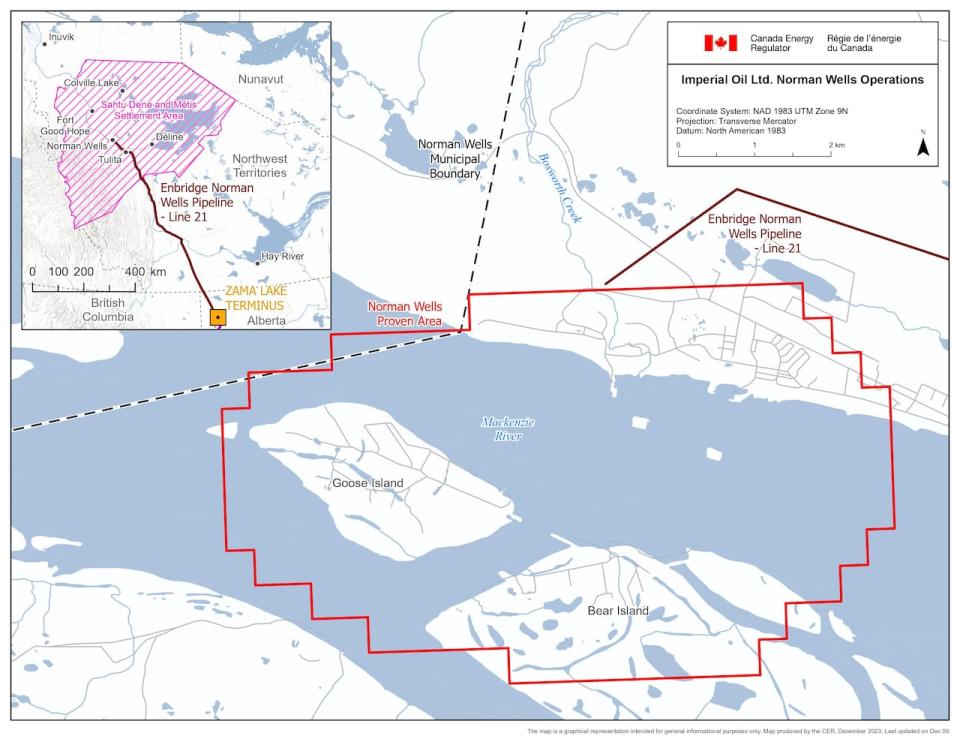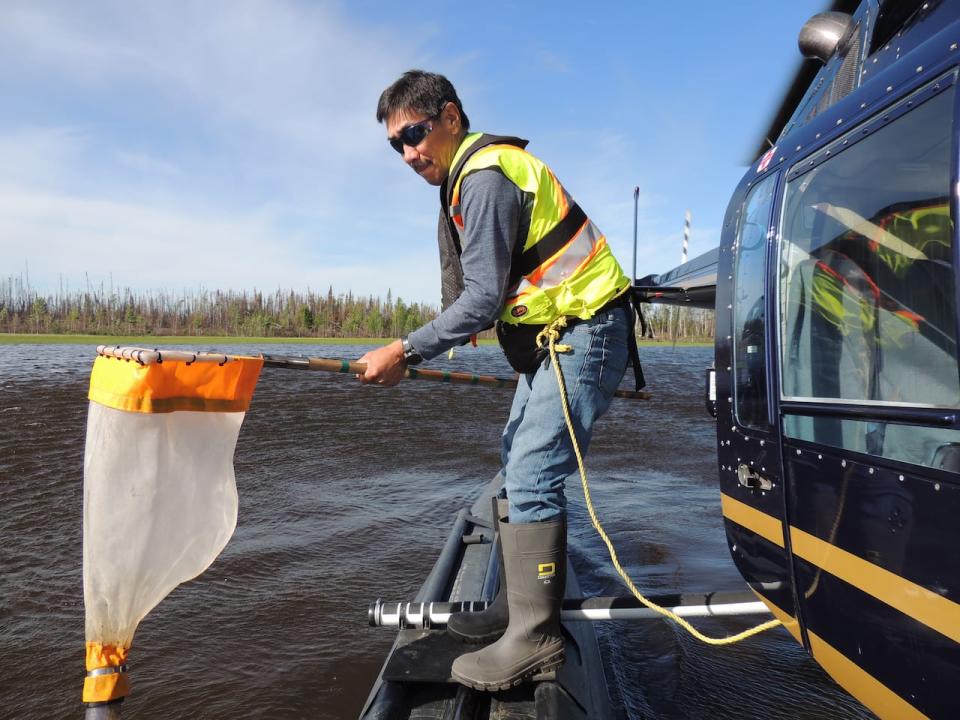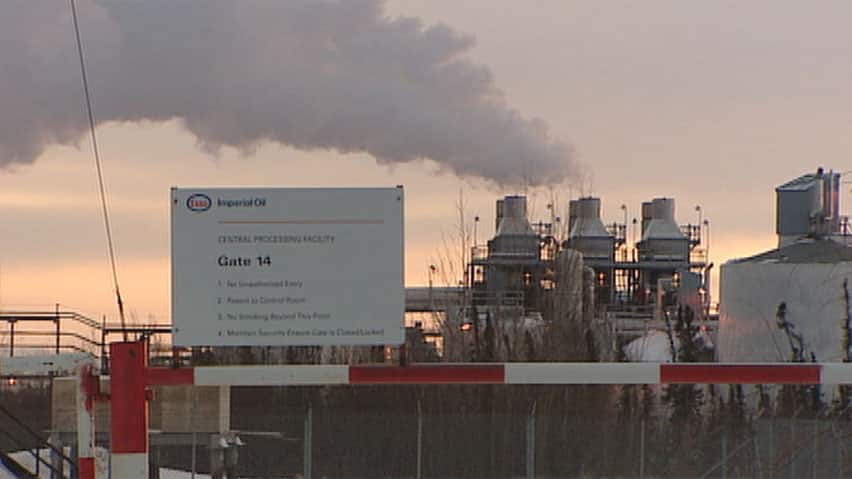Leaders in Fort Good Hope, N.W.T., worry about how oil production is affecting the Mackenzie River

Some people in Fort Good Hope, N.W.T., say they're concerned about what oil extraction in Norman Wells is doing to the Mackenzie River, and they want more say in how the project is regulated.
That's what Fort Good Hope leaders told commissioners with The Canada Energy Regulator at an "oral Indigenous knowledge" hearing on the future of the Norman Wells field held in the community last week.
"We should be the ones making decisions on these questions, not Canada," Chief Collin Pierrot told commissioners.
The three-day hearing was called by The Canada Energy Regulator as part of its decision-making process on two development proposals from Imperial Oil late last year.
Imperial Oil is seeking permission to drill below the Mackenzie River to install a new bundle of lines to replace Line 4-90, which was damaged in 2022, and leaked 55,000 litres of water used in industrial processes into the Mackenzie River.
The one to 1.5 kilometre-long lines would run between Goose Island and Bear Island on the Mackenzie River.

This map from Canada Energy Regulator shows Goose and Bear islands on the Mackenzie River. (Canada Energy Regulator)
Imperial Oil has also asked the federal regulator to extend its operating license, which is set to expire at the end of 2024, for another 10 years, until 2034.
Canada Energy Regulator spokesperson Christy Wickenheiser told CBC the hearing was an opportunity for commissioners with the federal regulator to listen to "anything and everything" people in the community want to tell them about the project.
For community members in Fort Good Hope, it was also their a chance to have their concerns heard about how oil extraction is affecting them.
'It's getting us sick'
K'asho Got'ı̨nę land guardian Buddy Gully presented on Wednesday.
"We're the first community that's below Norman Wells that gets all the junk that comes down the river. It's getting us sick," he told commissioners.
Fellow land guardian Twyla Edgi-Masuzumi said she was particularly concerned about changes she is seeing in fish on the river, describing white growths she has seen on the guts of many fish she has harvested over the last couple of years.
"It kind of makes me scared to work on fish and to feed my kids that, and it makes me sad that I have to restrict my kids," she said.
Desire for more consultation
Many speakers also criticized officials at Imperial Oil for what they felt was inadequate communication when Line 4-90 leaked in 2022.
Yamoga Land Corporation president Erutze said that he wasn't notified until two days after the spill.
"During the two days in which Imperial Oil failed to notify the K'asho Got'ı̨nę, we were swimming in the river, drinking the river water."
Harvester and former land guardian Joseph Rabisca echoed the concerns, saying he wanted to see "better communication, more information shared" from Imperial Oil.
"We have to start working together to get a better oversight of everything that's going to be happening," Rabisca said.
Danny Masuzumi presented in his role as director of the K'asho Got'ı̨nę Foundation, which oversees the land guardian program. He also said he would like to see more monitoring of the Norman Wells oil field.

"Thinking of Line 4-90 replacement, I feel that there should be an independent study or independent water monitors, environmental assessment done," Danny Masuzumi said. (Kirsty Gurney)
"Thinking of Line 4-90 replacement, I feel that there should be an independent study or independent water monitors, environmental assessment done. Even environmental water assessment," he said.
"I feel that for the community of Fort Good Hope, N.W.T., what they really want is your co-operation and your responsibility to do your job, and to be accountable,"
He said that ultimately, he would just like to see more meaningful consultation from federal regulators, who get the final say in the Norman Wells proven area, and Imperial Oil itself.
"If we could be a part of what you're doing on this project, so that way we could be a part of history, and tell our grandchildren how we took care of business working with Imperial Oil, how we made sure that we did they job right, to protect our environment.
"Our fish, our rabbits, birds, moose, caribou, they all live along the river."

The Imperial Oil facility in Norman Wells, N.W.T. (File Photo)
Ultimately, the final say on whether the two Imperial Oil proposals go forward with rest with commissioners at the Canada Energy Regulator.
There are several stages of the hearing process still to be completed.
The Canada Energy Regulator will also hold another, virtual oral Indigenous knowledge hearing in mid-June, and all parties will get a chance to make written submissions. The process will end on August 7, with final responses from Imperial Oil.
The commissioners have not said how long they expect the decision to take.

